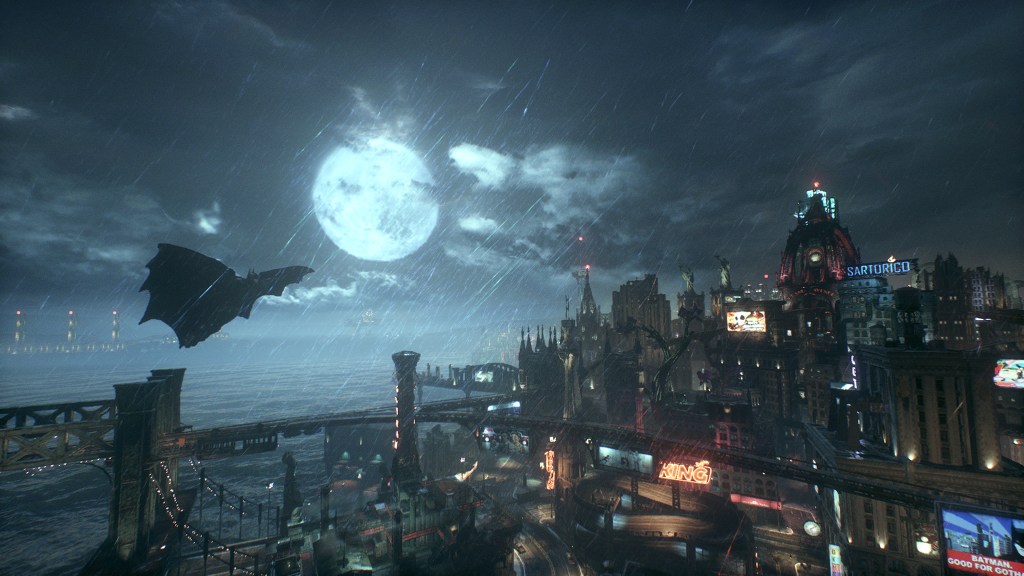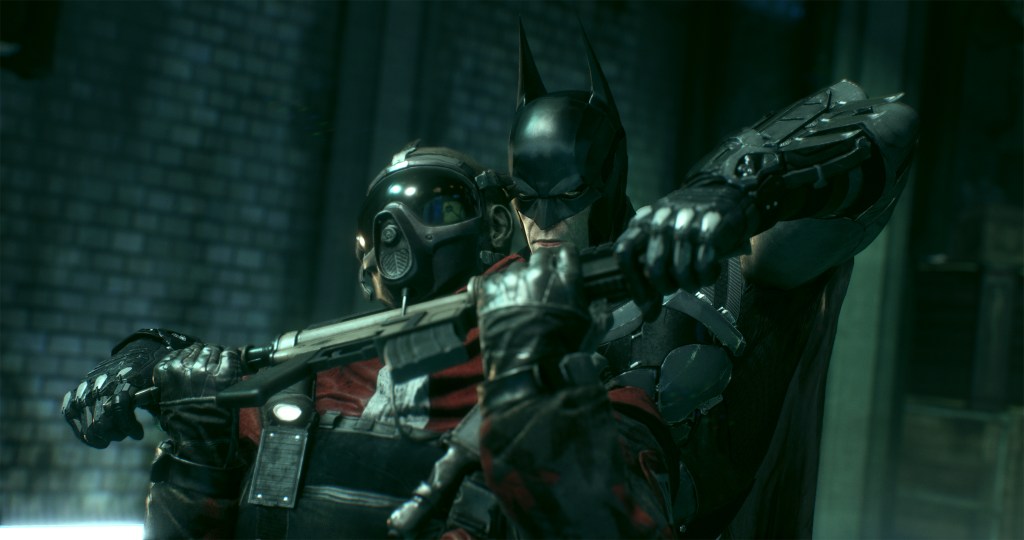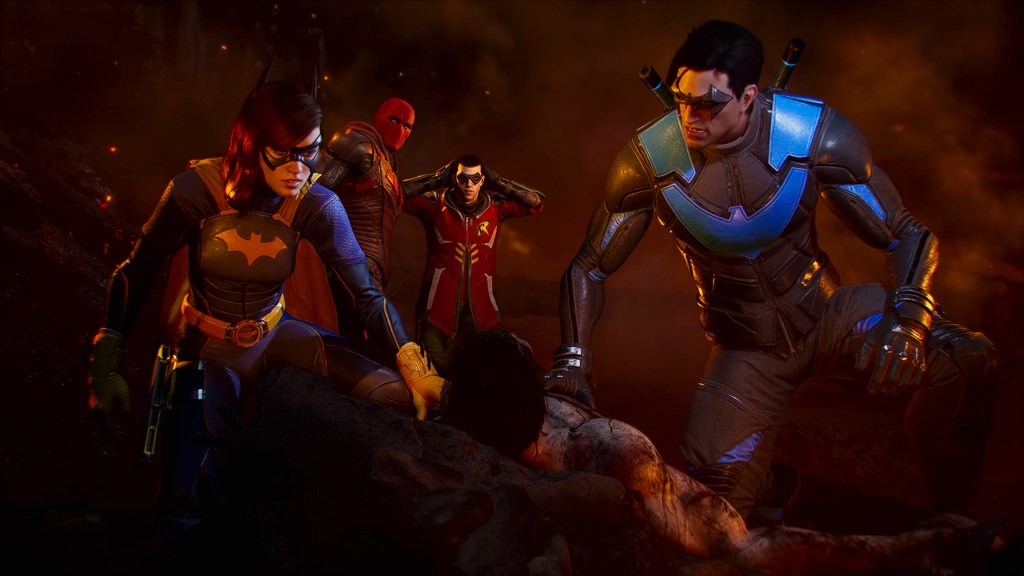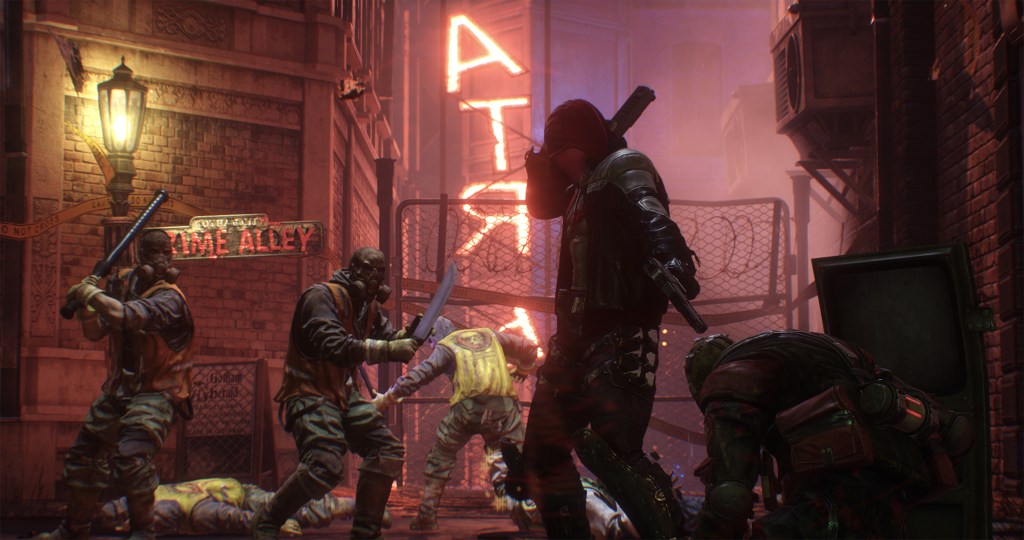Batman: Arkham Knight had a rough few months around its launch. Complaints swirled over its busted PC version, overly expensive (and initially vaguely advertised) $40 season pass, collection of exclusive pre-order or otherwise hard-to-get DLC, Batmobile segments, and the way in which developer Rocksteady Studios’ “completely original” antagonist was a reskinned version of an existing one.
Videos by ComicBook.com
But the sands of time have been kind to this trilogy-ending title. Many of these issues were patched up or have faded in the ensuing decade, but, perhaps more importantly, the context surrounding Arkham Knight has further downsized its past problems. Warner Bros. Games has completely fumbled its DC action games since, offering little more than unwanted trend chasers and unrealized games. It’s been 10 years of bad decisions that have made Arkham Knight shine all the brighter.

RELATED: First DCU Video Game Is Still a “Couple Years” Away, Says James Gunn
Arkham Knight is quite literally shiny because of how well it still holds up visually. Rocksteady’s Art Deco version of Gotham City is absolutely stunning with its persistent torrential downpour and bright neon signs that pierce through the atmospheric fog. Its skies are buzzing with all sorts of aircraft, and its lively streets are crammed with opportunistic criminals and drones looking to end the Dark Knight. A fight is never hard to find.
Arkham Knight is still technically and artistically sound in ways that often defy its age, and all of these choices give its world a palpable style that the few DC action games since did not have. Gotham Knights’ Gotham City was lifeless by comparison with its more pedestrian interpretation of the city, which had little in the way of atmosphere or personality. Its optional side quests didn’t fill out the world and only felt like procedurally generated busywork. Suicide Squad: Kill the Justice League’s Metropolis was more technically impressive and had its share of beautiful landmarks, but was held back by its live service trappings. The side missions were more of the same hollow drivel designed to feed the loot-driven maw and keep players on a treadmill no one asked for.
Arkham Knight’s Gotham City has side missions that make sense and don’t fall into the trap of feeling like Content™. They pop up naturally — the Man-Bat reveal is still a fantastic surprise and the Hush mission remains a great bait and switch — and not only give players more ways to engage with the world, but they also contribute to how chaotic this city is on that ill-fated night. It doesn’t matter that most of these tertiary villains are C-tier thugs, since they play their part of being just another headache for Batman well enough. The reveal surrounding the main villain, the Arkham Knight, remains the low point of this trilogy, but the overall story is still paced well and constantly serves up new, interesting scenarios. There are still way too many Riddler trophies, though, and they are the closest the game gets to having filler.

These green doodads stand out because of how tightly honed the rest of the game is. Combat is a highlight and hasn’t lost its impact one bit. Smooth controls undergird the entire system, as Batman responds quickly to player inputs without looking or feeling jerky. He’s able to slide from foe to foe in a delicate dance of bone-breaking and tendon-tearing that’s almost as satisfying to watch as it is to play.
That dance is composed of a series of micro-decisions that have to be made quickly, all of which are supported by its incredible enemy design that immediately conveys each threat at a glance. Each goon is defined by their unique silhouette, uniform color, or weapon, so it’s easier to think of what attack to use in order to keep the almighty combo going. Arkham Knight inherits much of this from the prior two Rocksteady entries, but it’s the deepest and most refined here. No game outside of Sifu has even come close to matching Batman’s supreme fisticuffs, and that lack of a true successor works heavily in Arkham Knight‘s favor a decade later. Stealth similarly benefits from this sense of empowerment, array of choices, and enemy variety, as well as the improvements Arkham Knight brings to this carefully curated formula.

Games don’t often have two different gameplay pillars that are this strong, and it’s a testament to how well-designed Arkham Knight is. Rocksteady layers in the established mechanics well, but also introduces more upgrades and enemies at a steady clip, meaning there is always something new to experiment with or be challenged by. This includes the Batmobile segments because they constantly evolve, reward precision, and, much like Grand Theft Auto IV‘s driving, require thoughtful braking and drifting to succeed.
Rocksteady’s main Arkham titles are not just great Batman games full of respectful nods and references to the source material; they’re just great video games, period. The studio innovated and led by example, as evidenced by the many games that tried — the key word here — to emulate Arkham’s melee combat system. Arkham Asylum changed the game for superhero video games because of this will to lead, and that trend only continued due to Rocksteady’s commitment to the craft.
Game director Sefton Hill told GameSpot the studio “[stayed] true to [its] instincts” and created “the game [it] wanted to make.” He noted it was foolish to water the game down or guess what the market wanted before stating there was “no focus testing of ideas.” Passion, attention to detail, and coherence were three pillars he listed as important for realizing the studio’s vision.

This pledge is almost entirely absent from DC’s modern action games and is the most concise way to explain a lot of their deficiencies. Gotham Knights and Suicide Squad blindly followed trends and feel like they were designed by the very outsider-driven focus testing Hill swore off. According to Bloomberg, now-former Warner Bros. Interactive Entertainment president David Haddad enforced a live service mandate for Gotham Knights, while Suicide Squad was pitched as a live service game to appease the strict publisher, despite the studio’s unfamiliarity with developing those types of games.
The direct live service elements were eventually phased out of Gotham Knights, but it still devolved into a repetitive, mashy action RPG that attempted to use co-op and gear scores to paper over its shallow gameplay and anemic story. Suicide Squad’s witty writing and striking visuals made it fare a little better, but it was also a repetitive slog that severely lacked the mechanical cohesion of the Arkham games. Dabbling in new genres isn’t inherently bad; it’s only bad when it goes against the team’s strengths and is done cynically.
Unconfident games stemming from a naively optimistic corporate mandate damned those two titles. But at least they saw the light of day. Monolith Productions’ Wonder Woman was canned after years of development, despite seeming primed to pick up the Arkham torch since it was a single-player game with its own take on the creative Nemesis System from Middle-earth: Shadow of Mordor and its sequel. WB Games Montréal’s Suicide Squad and Damian Wayne games were also snuffed out before they were officially revealed. Not much is known about this pair of doomed titles, but their deaths speak to the overall chaos surrounding Warner Bros. and its inability to release quality DC games in a timely manner over the last decade, sans Injustice 2 and the VR-exclusive Batman: Arkham Shadow.

Arkham Knight was great in 2015, but only looks better now within the context of those failures and false starts. Even a few of its launch-era downsides have softened with time. Modern PCs are also now more or less able to brute force the issues that plagued the PC version at launch. The promotional cosmetic DLC is cheap and, by and large, accessible on each storefront. The previously pricey season pass also costs half as much now.
Being able to go through the dozens of brawler and stealth challenge maps as all eight characters (thanks to a crucial post-launch update) through that season pass adds a significant amount of replay value to the game since the mechanics are pristine enough to warrant a mode solely dedicated to them. However, the Season of Infamy: Most Wanted expansion is the more thematically important part of that collection of DLC. This extra episode serves as Rocksteady’s meta sendoff of making Arkham games since it sees the Dark Knight saying goodbye to some of his adversaries. It’s a surprisingly heartfelt epilogue that works on a textual and subtextual level.
Season of Infamy marks the end of fantastic DC action games and Rocksteady as an industry-leading talent. However, there’s a chance this greatness may be restored, given the shakeup in WB’s gaming division and report noting a new single-player Batman title is in early development at Rocksteady. It would be wise to use the innovation and ingenuity that fueled the Arkham trilogy as guiding principles for these new endeavors. Following greed-driven mandates is a recipe for another decade of failures and would once again leave Arkham Knight as the sole Bat-Signal-like beacon of light amidst a long stretch of darkness.








